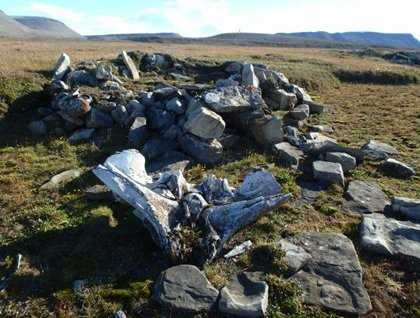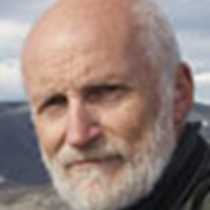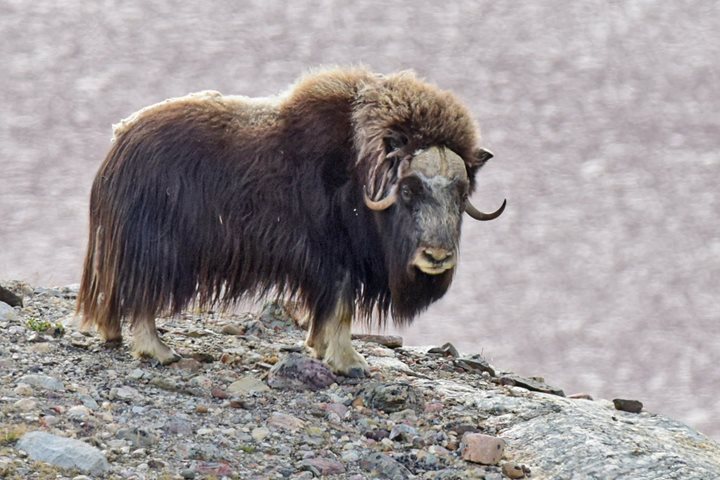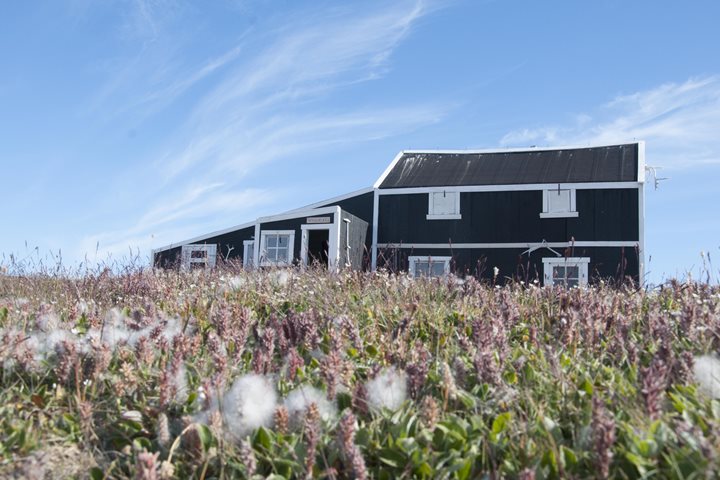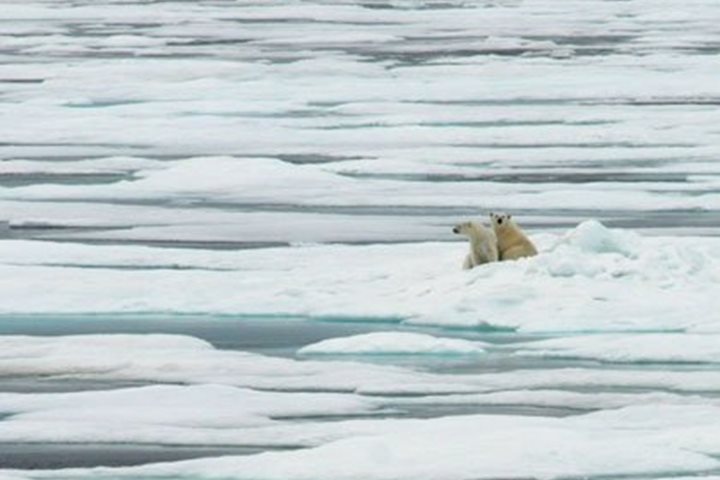As the four-hour short summer night ended, National Geographic Explorer ploughed the waters of Lancaster Sound once again, now heading towards the most easterly fjord on the south coast of Devon Island: Croker Bay. The locality was named by William Edward Parry in honor of John Wilson Croker. In 1818, John Ross had named a mountain range ”Croker Mountains,” but when Parry the following year proved the range to be fata morgana, Croker had to be satisfied with a much smaller feature named after him.
What a wonderful morning in the High Arctic. Blue sky, bright sun, and a fresh air to breathe. By breakfast time we anchored in the bay right next to the shore and went ashore. This was our first visit ever to this place on Devon Island, so we all engaged in a real exploring of the beautiful landscape.
Just above the beach line were several very well preserved winter-house ruins from the Thule culture. From the 1200s and until late in the 1800s, Inuit were living in these regions hunting caribou and muskoxen as well as marine mammals like seals, whales and polar bears; bones from all of which were still found around the house-ruins. And there were still inhabitants! Families of lemmings now occupied the dwellings that once were home to the Inuit families. The new inhabitants experienced many head-to-head encounters with us humans and they had their picture taken.
Farther inland a group of muskoxen was spotted and the long hikers made the long-bearded oxen their turn-around point. It was a family group of adult females, sub-adults and yearlings, plus two big bulls who both were trying to control the ”harem.” We enjoyed viewing these unique High Arctic animals in the absolutely pristine but almost barren valley. This was a memorable wildlife moment that makes you realise the harsh living conditions and appreciate how the High Arctic inhabitants manage to survive, and even thrive.
Today’s list of furry animals inluded not only muskox, Arctic hare and lemming, but also the smallest furbearer in the Arctic: the woolly-bear. The latter is a furry caterpillar that in this cold climate takes seven years to grow large enough to eventually morph into an adult butterfly – which only lives a few hours!
After lunch National Geographic Explorer set her course for Ellesmere Island, the northernmost of all the islands in Canada. Off the southeast corner of Devon Island we encountered two sperm whales feeding in the deep waters. First part of the afternoon was devoted to the topic ”Climate changes and the Polar regions” presented by Steve MacLean and followed by an engaged discussion.
By mid afternoon National Geographic Explorer was steaming north along the glacier-filled east coast of Devon Island towards Coburg Island. The galley staff served the most wonderful Swedish pancakes at tea time and we then enjoyed a talk by Tom Ritchie on ”Why search for a Northwest Passage?”– a spicy explanation, so to speak.
When this eventful day of exploring was drawing to an end, we prepared our minds for new adventures waiting for us below the northern horizon.

